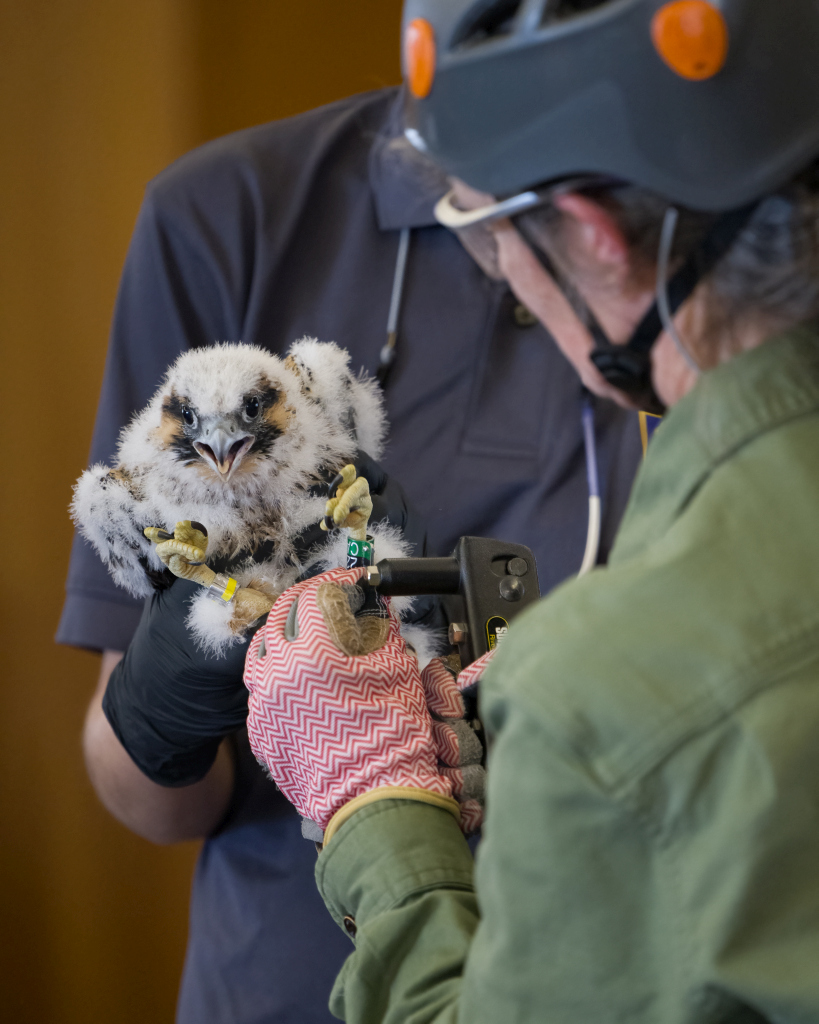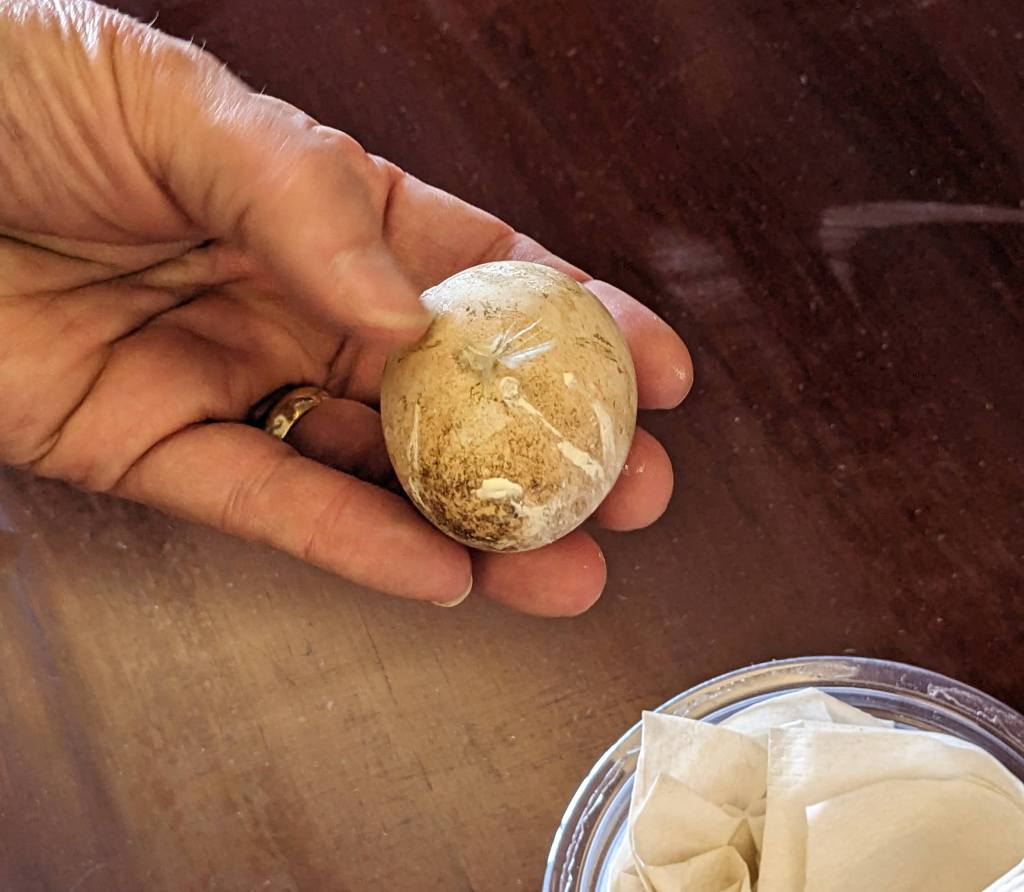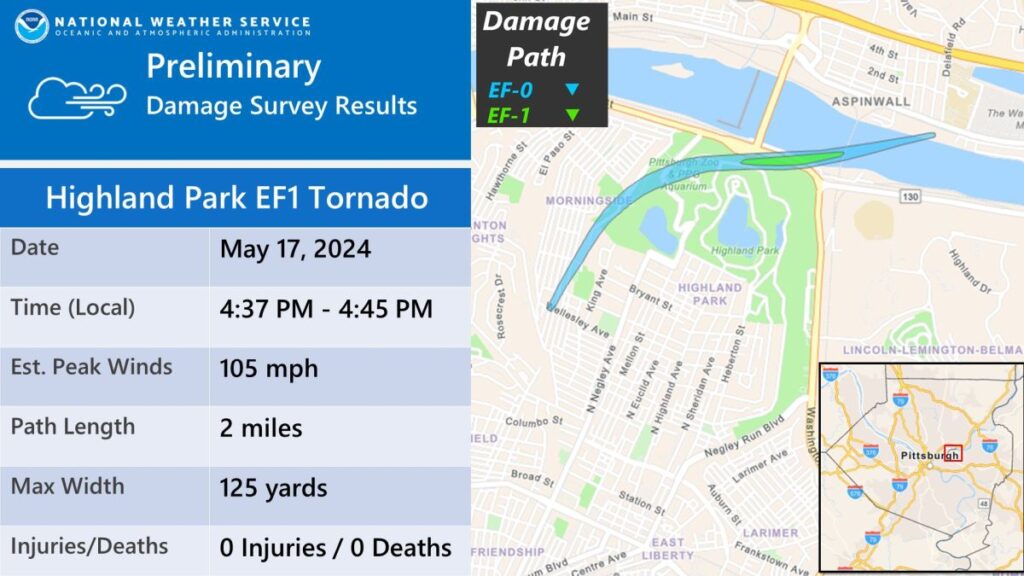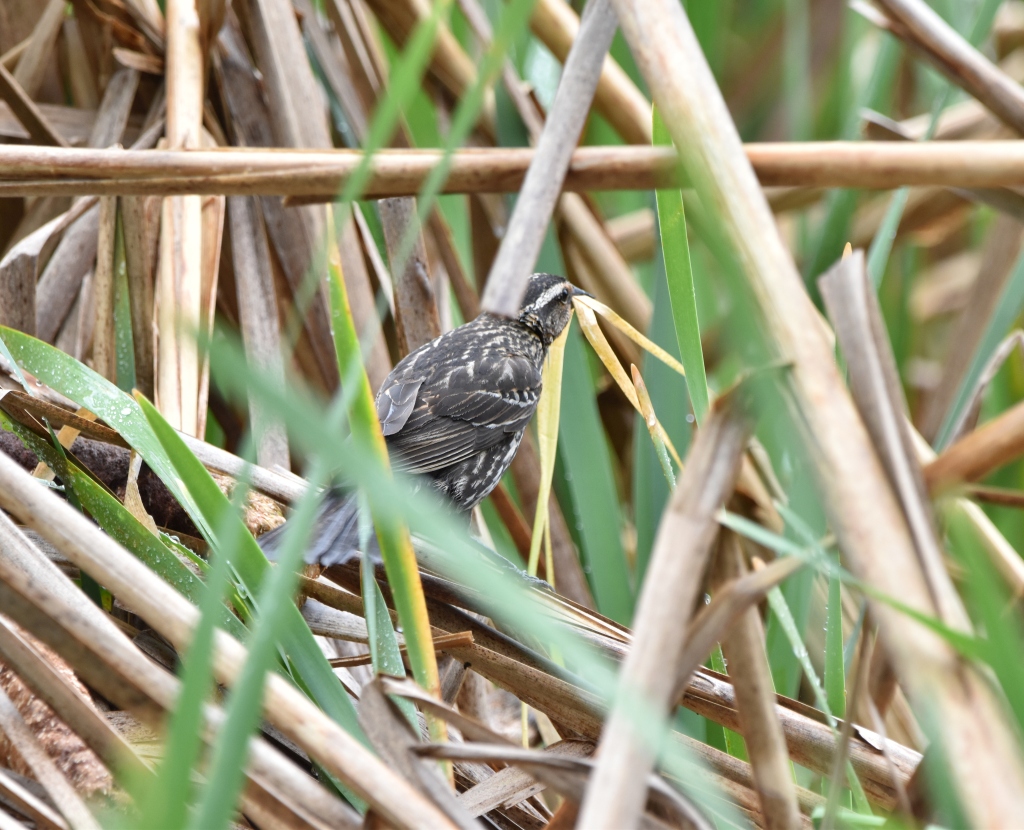
21 May 2024
This morning two peregrine chicks were banded at the University of Pittsburgh’s Cathedral of Learning by Patti Barber, Endangered Bird Biologist from the PA Game Commission (PGC).
As soon as Patti began collecting the chicks, the parents Carla and Ecco strafed the building to drive her away. Carla herself is banded but this was her first time experiencing it as a mother. She was fierce in protecting her chicks.

Indoors, the chicks were given health checks (they are very healthy!), weighed to determine their sex, and given two leg bands: a black/green color band that can be read through binoculars and a silver USFW band.

Patti put colored tape on the silver USFW bands so we can identify the birds by color on the falconcam. The smaller chick is yellow, the larger chick is blue.
Interestingly the larger of the two youngsters (blue) is clearly female, weighing in at over 1000g. The smaller bird (yellow) weighed 730g, just above the borderline that designates males as less than 700g and females as more.
Yellow was officially listed as “sex undetermined” but my guess is that he’s male. The Cathedral of Learning has seen a few male peregrine chicks weighing 710-720g. (Dorothy’s in 2009, 2010 and Morela’s in 2022). We humans won’t know for sure if this bird is male until we see him nest.

“Blue” calmly waited while we all took photos.


In less than half an hour the chicks were back at the nest and their lives returned to normal.
Meanwhile we got a glimpse of the unhatched egg which Patti collected for testing.

The chicks will grow up rapidly in the next two weeks and leave the camera view by the end of the month.
Stay tuned for the Fledge Watch schedule at Schnenley Plaza at the end of this month and early June.
p.s. A Big Thank You goes out to everyone who made this day possible. (Apologies to anyone I’ve missed in this list.)
- The University of Pittsburgh for being such a great peregrine landlord, for publicizing the peregrines, and for hosting the banding.
- The PA Game Commission for their commitment to banding the peregrine chicks at the Cathedral of Learning. (Peregrine banding in PA is rare nowadays because the birds are no longer endangered / threatened.)
- The National Aviary for broadcasting the Pitt peregrines’ nest from their falconcam and for organizing the banding.
(photo credits are in the captions)































